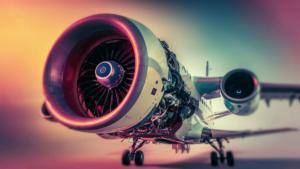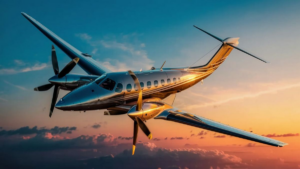When it comes to aviation, safety is paramount. One of the concerns often discussed is whether a plane can continue to fly safely if one of its engines fails mid-flight. This article delves into the mechanics, procedures, and safety measures surrounding the question: Can a plane fly with one engine?
The Dynamics of Flying with One Engine
Modern aircraft are designed with redundancy and safety in mind. While the loss of an engine mid-flight is a rare occurrence, it is a scenario that pilots are trained to handle. The ability of a plane to fly with only one engine largely depends on several factors, including the type of aircraft, altitude, weight, and weather conditions.
Types of Aircraft
Multi-engine aircraft, such as commercial airliners, are equipped with more than one engine precisely to mitigate the risk of engine failure. These planes are designed to be able to continue flying safely with one engine out of commission. Single-engine aircraft, on the other hand, have no redundancy in engine power, so flying with one engine is not an option.
Altitude and Weight
Altitude plays a crucial role in the performance of an aircraft with only one engine operational. At higher altitudes, the air is thinner, which means the remaining engine has to work harder to maintain altitude and speed. Additionally, the weight of the aircraft affects its ability to fly on one engine. Pilots must consider these factors when determining the feasibility of continuing the flight.
Weather Conditions
Weather conditions can also impact the ability of a plane to fly with one engine. Strong headwinds or turbulence may make it more challenging for the aircraft to maintain stability and control with reduced engine power. Pilots must assess the situation and make informed decisions based on safety considerations.
Procedures and Safety Measures
When faced with an engine failure, pilots follow specific procedures to ensure the safety of the aircraft and its passengers. These procedures are meticulously outlined in their training and include actions such as adjusting the aircraft’s attitude, configuring the remaining engine for optimal performance, and selecting an appropriate diversion airport.
Pilot Training
Pilots undergo rigorous training to prepare for emergency situations like engine failure. They are trained to remain calm, analyze the situation, and take decisive actions to safely land the aircraft. Simulator training allows pilots to practice handling engine failures in a controlled environment, ensuring they are proficient in executing the necessary procedures.
Aircraft Maintenance
Regular maintenance and inspections are crucial for ensuring the reliability of aircraft engines. Airlines adhere to strict maintenance schedules and protocols to detect and address any potential issues before they escalate into emergencies. Well-maintained engines are less likely to fail in flight, further enhancing the safety of flying.
Regulatory Standards
Aviation authorities around the world establish and enforce regulations to ensure the safety of commercial aviation. These regulations govern aircraft design, maintenance practices, pilot training, and operational procedures. Compliance with these standards is mandatory for all airlines and operators, contributing to the overall safety of air travel.
In conclusion, while the prospect of flying with one engine may seem daunting, modern aircraft are equipped to handle such situations with efficiency and safety. Through meticulous planning, rigorous training, and adherence to regulatory standards, pilots and airlines ensure that passengers can travel with confidence, knowing that their safety is the top priority.
Frequently Asked Questions
Here are some common questions related to flying with one engine:
| Question | Answer |
|---|---|
| Is flying with one engine common? | No, flying with one engine is not a common occurrence. Modern aircraft are designed with redundancy and safety features to minimize the risk of engine failure, and pilots are trained to handle such emergencies. |
| What happens if both engines fail? | If both engines fail, pilots follow emergency procedures to glide the aircraft to the nearest suitable landing area. This scenario, known as a dual-engine failure, is extremely rare and pilots train extensively to handle it. |
| Can a plane take off with one engine? | It depends on the type of aircraft and the specific circumstances. While some larger multi-engine planes are certified to take off with one engine inoperative, it’s generally not a standard procedure. Pilots are trained to abort takeoff if an engine failure occurs before reaching a critical speed. |
Aircraft Performance Considerations
Besides the factors mentioned earlier, several other performance considerations affect flying with one engine:
- Drag: With one engine out, the asymmetric thrust can induce additional drag, affecting the aircraft’s performance.
- Center of Gravity: Pilots must manage the aircraft’s center of gravity carefully when flying with one engine to maintain stability.
- Systems Redundancy: Aircraft systems such as hydraulic and electrical systems may be affected by the engine failure, requiring pilots to adjust accordingly.
See also:






